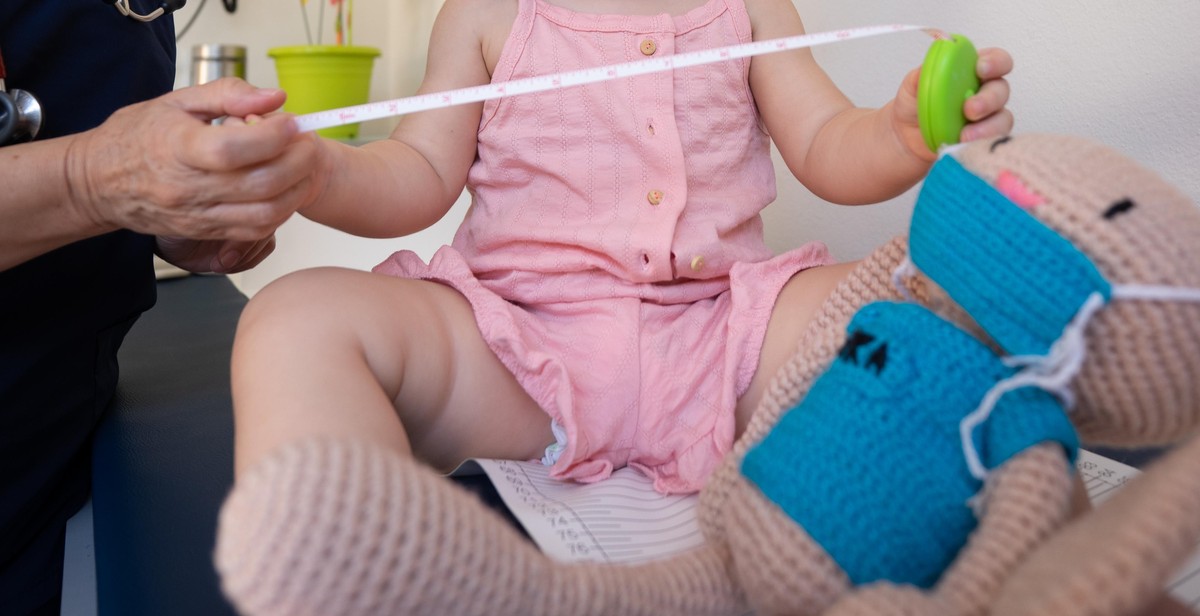How to Implement Effective Patient Safety Protocols in a Hospital Setting
Effective patient safety protocols are crucial in a hospital setting. Patients come to hospitals to receive care, and it is the responsibility of the healthcare providers to ensure that they receive the best possible care in a safe environment. Implementing effective patient safety protocols can help to prevent medical errors, reduce the risk of infections, and improve patient outcomes.
Why Effective Patient Safety Protocols are Important
Effective patient safety protocols are important for several reasons. Firstly, they help to prevent medical errors. Medical errors can have serious consequences for patients, including disability and even death. Effective patient safety protocols can help to reduce the risk of medical errors by ensuring that healthcare providers follow best practices and guidelines.
Secondly, effective patient safety protocols can help to reduce the risk of infections. Hospital-acquired infections are a serious problem in healthcare, and they can have serious consequences for patients. Effective patient safety protocols can help to prevent the spread of infections and keep patients safe.
The Consequences of Poor Patient Safety Protocols
Poor patient safety protocols can have serious consequences for patients. Medical errors can lead to disability or even death. Hospital-acquired infections can also have serious consequences, including prolonged hospital stays, readmission, and even death. Poor patient safety protocols can also lead to a loss of trust in the healthcare system, which can have long-term consequences for patients and healthcare providers alike.
Overall, implementing effective patient safety protocols is crucial for ensuring the safety and well-being of patients in a hospital setting.

Assessing Current Patient Safety Protocols
Implementing effective patient safety protocols is crucial in a hospital setting to ensure the well-being of patients. Before developing a plan to improve patient safety, it is important to assess the current protocols in place. Conducting a risk assessment and identifying areas of improvement are two key steps in this process.
Conducting a Risk Assessment
A risk assessment involves identifying potential hazards and evaluating the likelihood and severity of harm that could result from those hazards. In a hospital setting, potential hazards could include medication errors, falls, infections, and communication breakdowns.
To conduct a risk assessment, hospital staff should review incident reports, patient complaints, and feedback from staff members. They should also observe workflows and processes to identify potential hazards and areas for improvement.
Once potential hazards have been identified, the next step is to evaluate the likelihood and severity of harm that could result from those hazards. This can be done by using a risk matrix, which assigns a likelihood and severity score to each potential hazard. The scores are then used to prioritize which hazards should be addressed first.
Identifying Areas of Improvement
After conducting a risk assessment, the next step is to identify areas of improvement. This involves reviewing current patient safety protocols and identifying gaps and weaknesses.
Hospital staff should review policies and procedures related to patient safety, such as medication administration, fall prevention, and infection control. They should also review communication protocols and workflows to identify areas for improvement.
It is important to involve all staff members in this process, including nurses, physicians, and support staff. Each staff member has a unique perspective on patient safety and can provide valuable input on areas for improvement.
Once areas of improvement have been identified, the next step is to develop a plan to address those gaps and weaknesses. This may involve revising policies and procedures, providing additional training to staff members, and implementing new technologies or workflows to improve patient safety.
| Likelihood | ||
|---|---|---|
| Severity | Low | High |
| Low | Minor | Moderate |
| High | Moderate | Major |
Assessing current patient safety protocols is an important step in improving patient safety in a hospital setting. By conducting a risk assessment and identifying areas of improvement, hospital staff can develop a plan to address potential hazards and improve patient outcomes.

Implementing Effective Patient Safety Protocols in a Hospital Setting
Ensuring patient safety is a top priority for any healthcare facility, and implementing effective safety protocols is crucial to achieving this goal. Here are some key steps to consider when implementing patient safety protocols in a hospital setting.
Creating a Plan
The first step in implementing effective patient safety protocols is to develop a comprehensive plan. This plan should outline the specific protocols that will be put in place to ensure patient safety, as well as the roles and responsibilities of all staff members involved in implementing these protocols.
When creating a plan, it is important to consider the unique needs and challenges of your healthcare facility. For example, if your hospital has a high volume of patients with infectious diseases, your safety protocols should be tailored to address this specific concern.
Training Staff
Once your safety protocols have been established, it is important to train all staff members on how to implement them effectively. This includes not only clinical staff, but also administrative and support staff who may have a role in ensuring patient safety.
Training should be ongoing and should include regular updates to ensure that all staff members are up-to-date on the latest safety protocols and best practices. This can include in-person training sessions, online training modules, and regular meetings to discuss safety concerns and strategies for improvement.
Monitoring and Evaluating Protocols
Monitoring and evaluating safety protocols is essential to ensuring their effectiveness. This can include regular audits of safety procedures, as well as collecting and analyzing data on patient safety incidents and near-misses.
It is important to involve all staff members in the monitoring and evaluation process, as they can provide valuable feedback and insights into how safety protocols can be improved. This can include regular safety meetings and open channels of communication for staff to report safety concerns and suggest improvements.
Conclusion
Implementing effective patient safety protocols is crucial to ensuring the well-being of patients in a hospital setting. By creating a comprehensive plan, training staff, and monitoring and evaluating protocols, healthcare facilities can take proactive steps to minimize the risk of patient harm and improve overall patient outcomes.

Examples of Effective Patient Safety Protocols
Hand Hygiene
Hand hygiene is one of the most important patient safety protocols that hospitals need to implement. Here are some effective protocols:
- Ensure that hand hygiene is performed before and after patient contact, after handling body fluids, and after touching patient surroundings.
- Provide hand hygiene training to all staff members, including healthcare providers, housekeeping staff, and visitors.
- Place hand hygiene products, such as alcohol-based hand rubs and soap and water, in convenient locations throughout the hospital.
- Monitor compliance with hand hygiene protocols and provide feedback to staff members.
Medication Safety
Medication errors can have serious consequences for patients. Here are some effective medication safety protocols:
- Use barcode scanning technology to ensure that the right medication is given to the right patient at the right time.
- Implement a medication reconciliation process to ensure that patients’ medication lists are accurate and up-to-date.
- Use a standard order set for frequently prescribed medications to reduce the risk of errors.
- Provide medication safety training to all staff members who handle medications.
Fall Prevention
Falls are a common cause of injury in hospitals, especially among elderly patients. Here are some effective fall prevention protocols:
- Conduct fall risk assessments for all patients and develop individualized care plans based on the results.
- Provide non-slip footwear and assistive devices, such as canes and walkers, to patients who need them.
- Ensure that patients’ rooms are well-lit and free of obstacles.
- Implement bed and chair alarms to alert staff members when a patient attempts to get up without assistance.
| Protocol | Examples |
|---|---|
| Hand Hygiene | Hand hygiene training, convenient placement of hand hygiene products, monitoring compliance |
| Medication Safety | Barcode scanning technology, medication reconciliation, standard order sets, medication safety training |
| Fall Prevention | Fall risk assessments, non-slip footwear and assistive devices, well-lit and obstacle-free rooms, bed and chair alarms |

Conclusion
Implementing effective patient safety protocols in a hospital setting is crucial to providing high-quality care and reducing the risk of adverse events. By following the steps outlined in this article, healthcare providers can create a culture of safety and continuously improve their safety protocols.
The Importance of Continuous Improvement
Continuous improvement is a vital aspect of patient safety in a hospital setting. It involves ongoing evaluation of safety protocols and procedures to identify areas for improvement and implement changes that can enhance patient safety. This process requires a commitment to ongoing education and training, as well as a willingness to adapt to new technologies and best practices.
Healthcare providers must also prioritize communication and collaboration among all members of the healthcare team, including physicians, nurses, and support staff. Clear communication and teamwork can help prevent errors and ensure that patients receive the right care at the right time.
Final Thoughts
Implementing effective patient safety protocols in a hospital setting is an ongoing process that requires dedication, collaboration, and continuous improvement. By following the steps outlined in this article and making patient safety a top priority, healthcare providers can provide the highest quality care while minimizing the risk of adverse events.
| Key Takeaways: |
|---|
| • Implementing effective patient safety protocols is crucial for providing high-quality care |
| • Continuous improvement is essential to patient safety in a hospital setting |
| • Prioritizing communication and collaboration among healthcare team members is crucial for preventing errors and ensuring patient safety |
